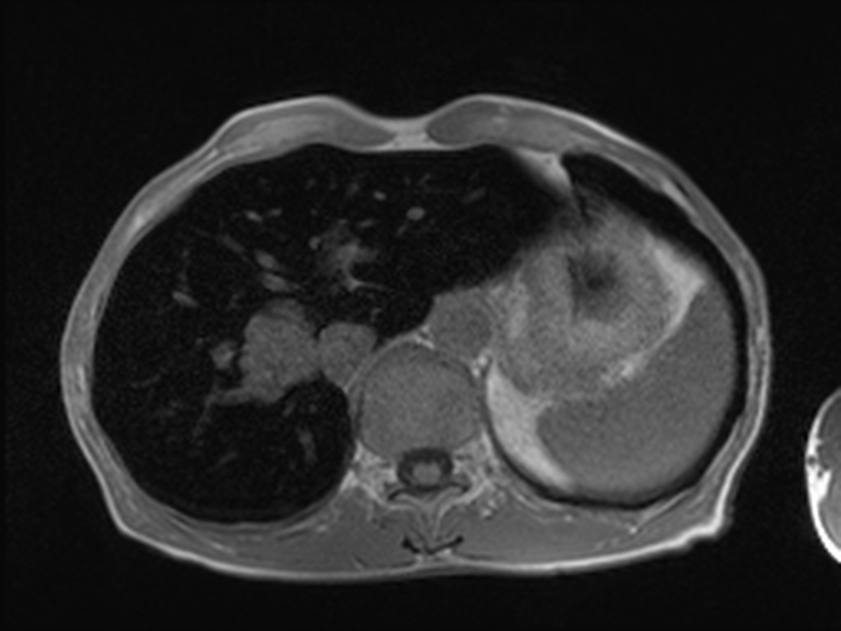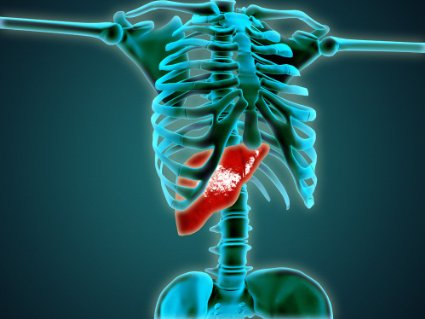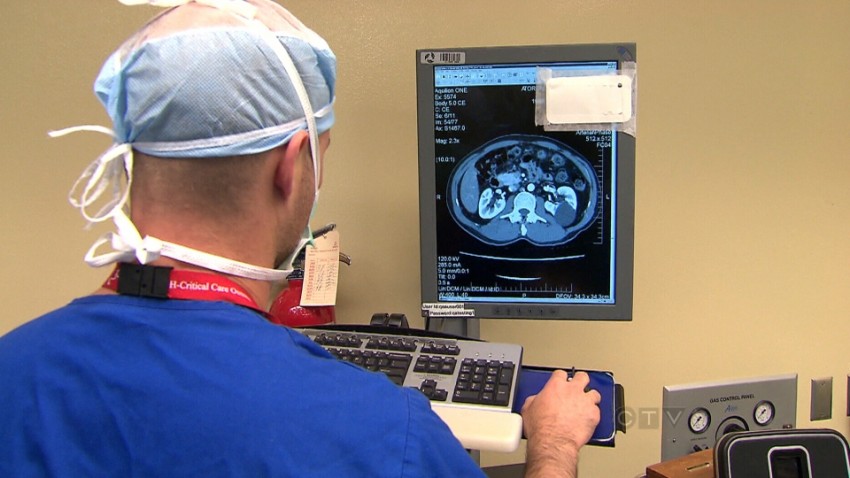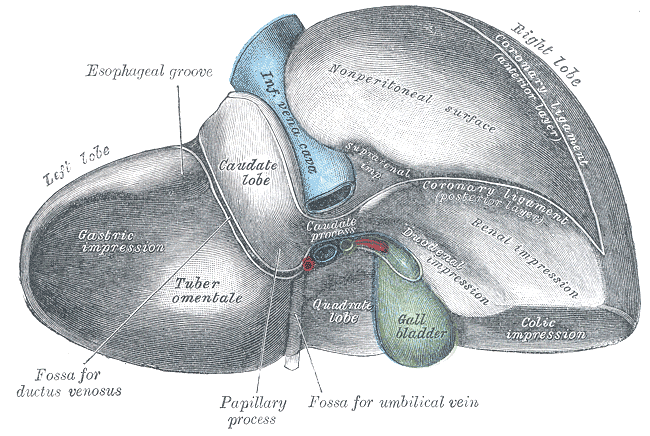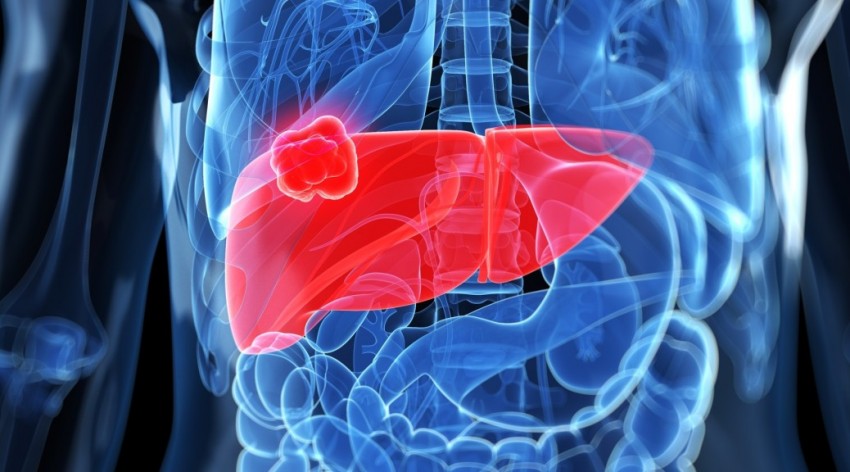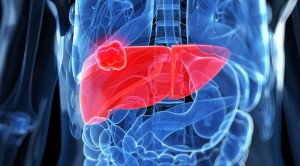Liver Info 6
HEMOCHROMATOSIS OF THE LIVER

Hemochromatosis is a genetic disorder where the body absorbs and stores too much of iron. This extra iron gets stored in all parts of the body especially the liver and leads to serious complications. The body absorbs about 10 percent of iron (about 1 – 2 grams per day) from food we take and is sufficient for the body. People with Hemochromatosis absorb more (4 – 5 grams leading to 15 – 40 grams per day) than the body needs leading over build up of iron and causing organ failures.
Symptoms for Hemochromatosis
There are no specific symptoms for this condition. Common symptoms of hemochroatosis are fatigue, pain in the abdomen and heart problems. These signs are noted in men between the age of 30 and 40 and above age 50 for women.
When the disease is not detected early, iron build up in the tissues cause serious complications such as
- Liver problems like cirrhosis, liver cancer, enlarged liver and liver failure
- Arthritis
- Diabetes
- Heart problems and heart failure
- Pigmentation and discolouration of skin
- Early onset of menopause
- Damage to pituitary and adrenal glands
- Impotence
- Gall bladder disease
- Depression
- Joint pains
- Loss of body hair (except scalp)
Genetic Cause for Hemochromatosis
Hemochromatosis is the result of a defect in the gene called HFE. HFE functions in regulating the iron absorption from food. The gene is present at birth but hemochromatosis develops only when both the parents have the defective gene. If it is from one parent, then the person is a carrier of the defective gene and does not develop hemochromatosis.
Adolescent and Neonatal Cause for Hemochromatosis
The cause for the adolescent and neonatal hemochromatosis is not known although it is not due to the HFE gene defect. The condition forms a fatal overload of iron and causes liver and heart diseases in both the cases.
Diagnosis for Hemochromatosis
If the levels are high in the following blood tests, test for confirming the presence of the HFE gene is done.
- Serum iron test – measures the level of iron concentration in blood
- Total iron binding capacity – measures the quantity of iron that the blood can carry
- Serum ferritin level – measures the level of ferritin protein containing iron
A liver biopsy confirms the presence of this disease. Excessive iron storage is found in liver damaged patients due to alcohol and hepatitis infection.
Treatment for Hemochromatosis
Treatment for hemochromatosis is safe and inexpensive. The best and effective treatment for hemochromatosis is Phlebotomy. It is a process where certain amount of blood is taken out from the body once or twice a week depending on the severity of iron over load. The treatment is followed for few months to a year. It helps reduce the iron level in the blood to normal and maintain the same. After this, maintenance treatment is given where a certain amount of blood is given every 2 to 4 months for life. The frequency of blood transfusion is based on the blood results every year.
Liked this article on Hemochromatosis Of The Liver and have something to say? Comment below and don’t forget to SHARE THIS ARTICLE!
SYMPTOMS OF LIVER DISEASE
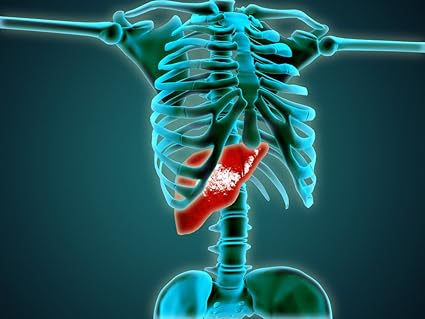
The liver is located in the upper right side of the abdomen below the ribs. It has many essential body functions such as:
- Producing bile, which helps your body absorb dietary fats, cholesterol, and vitamins A, D, E, and K
- Storing sugar and vitamins for later use by the body
- Purifying blood by removing toxins such as alcohol and bacteria from your system
- Creating blood clotting proteins
If there is any complication in those above mentioned functions, People will undergo the following symptoms.
Causes Pain in Abdomen and Swelling (Ascites)
A swollen abdomen occurs when your stomach area is larger than normal. This is sometimes called a distended abdomen or swollen belly. Sometimes it may occur if there is indigestion, food poison and so on; however people need to be aware if there is severe pain particularly in upper abdomen. There may also be
- A feeling of fullness
- Discomfort in your belly

Nausea and Blood in Your Vomit or Stool
Blood in vomit or stool is usually caused by bleeding from veins in the stomach. Vomiting blood, bloody vomit, hematemesis or haematemesis is a symptom that gives direct relation to disease in liver.
Loss of appetite
As the liver fails, complications may develop. In some people, complications may be the first signs of the disease. Many people with cirrhosis have no symptoms in the early stages of the disease. However, as the disease progresses, a person may experiences loss of appetite as a first symptom.
Indigestion and Burning Sensation in Stomach
Indigestion, also known as “dyspepsia”, is a term used to describe one or more symptoms including a feeling of fullness during a meal, uncomfortable fullness after a meal, and burning or pain in the upper abdomen.
Swelling in legs and ankles (edema)
‘Edema’ occurs when tiny blood vessels in your body (capillaries) leak fluid. This leakage can result from damage to or increased pressure in the capillaries, or from lowered levels of serum albumin, a protein in your blood.
When your body senses the capillaries are leaking, your kidneys begin to retain more sodium and water than normal to compensate for the lost fluid from your blood vessels. This increases the amount of fluid circulating through your body, which causes the capillaries to leak more. The fluid from the capillaries leaks into the surrounding tissue, causing the tissue to swell.

Chronic fatigue
Chronic Fatigue Syndrome (CFS) is also known as Myalgic Encephalomyelitis (ME) and it primarily affects young adults and resembles a prolonged flu-like illness.
The symptoms must be present for at least six months before it can be labelled as chronic fatigue syndrome. It seems that about 2 to 4 in a thousand people may have CFS and approximately two thirds of people who get it, are women.
Jaundice
Patients who have jaundice usually have both yellow-colored skin and eyes. Red blood cells travel to your liver, where they are broken down. “Bilirubin” is the yellow pigment formed by the breakdown of these old cells. Jaundice occurs when your liver doesn’t metabolize bilirubin the way it is supposed to.

Itching Skin
Pruritus simply means itching. Prolonged itching of the skin is a major sign of liver disease. When the liver is unable to properly neutralize chemicals, toxins and parasites in the body, a backup method of elimination is that the body may then try to get rid of these undesirable substances through the skin. This can result in itchy rashes and brown spots on the outside of the skin as the foreign substances are pushed out through the outer skin layers.
Changes in Urine Color
Observing the color of your urine is a reasonable way to be alerted that your liver might be abnormal. In general, dark urine could be a signal that the liver is struggling to function properly. When referring dark-colored urine, the following colors are implied:
- Orange
- Amber
- Brown
- Root beer or cola-colored
Many symptoms might be observed even during the normal functioning of your liver, hence always get the advice from a physician before coming to a conclusion.
Liked this article on Symptoms Of Liver Disease and have something to say? Comment below and don’t forget to SHARE THIS ARTICLE!
TESTS AND DIAGNOSIS FOR LIVER PROBLEM

There can be a number of causes for the liver problem like genetic, infections, alcohol abuse and medicine overdose. Therefore a number of tests are required to find the cause for the disease. Before ordering for tests, the history of the patient, if he is using alcohol and the family history of liver problem are known along with this a physical examination is also done. Physical examination of the abdomen, skin, brain, heart and lungs may show indications for liver problem.
Tests for liver disease diagnosis are of three types: Laboratory, radiological and biopsies.
Laboratory Tests
Extensive blood work is done where the following blood parameters are examined.
- Aspartate Amionotransferase (AST) and Alanine Aminotransferase (ALT) liver enzymes are found in raised levels in case of liver inflammation or injured liver. These are also raised in cases of alcohol induced liver disease and in fatty liver diseases.
- Bilirubin level in blood is examined. High levels of conjugated and unconjugated bile indicates liver problem.
- Protein and albumin levels in the blood are checked to see if they are in the appropriate range.
- Gamma Glutamyl Transferase (GGT) and Alkaline Phophatase enzyme levels are raised in case of liver disease.
- Low levels of Total blood count of the white blood cells, red blood cells and the platelets is an indication of the liver disease in its advanced stage.
- Rate at which the blood clots is monitored. Protein formation is hindered by the damaged liver tissues leading to the fail of clotting mechanism thus forming the risk of easy bleeding and bruising.
- Pancreatic lipase test is done as the inflammation in the pancreas is an indication of liver disease.
- Liver problem is associated with kidney dysfunction. Blood urea, creatinine, and electrolytes are checked.
- Blood test to detect Hepatitis viruses is performed.
- Ascitis is the collection of fluid in the abdomen. Ascitic fluid test may reveal cancer cells in patients with liver cancer.
Radiological Tests
These tests help in detecting the liver diseases.
- Computed Tomography (CT) Scan help in looking at the liver tissues in detail specifically without exposing other areas. Any abnormalities are shown in the CT.
- Endoscopic Retrograde Cholangiopancreatography (ERCP) is a procedure where a tube fitted with a camera is directed into the gastrointestinal tract to look for any pathology in the bile and pancreatic ducts.
- Magnetic Resonance Imaging (MRI) produces most advanced images and helps in detecting liver problems and other abnormalities like tumours and blockages. It is used when the CT is not very clear.
- Ultrasonogram (USG) produces sound waves which help detect any pathology in the liver. Any abnormalities like blocked ducts, tumours are also detected.
Liver Biopsy
With the help of local anaesthetic agent, pieces of liver tissues are extracted with the help of a needle. An USG or a CT scan is used to guide the needle into the liver. The microscopically examined tissue sent to the laboratory confirms the presence of liver disease. Liver biopsy can also be done using the laparoscopic surgery method.
Liked this article on Tests And Diagnosis For Liver Problem and have something to say? Comment below and don’t forget to SHARE THIS ARTICLE!
ROLE OF GENES IN LIVER DISEASE
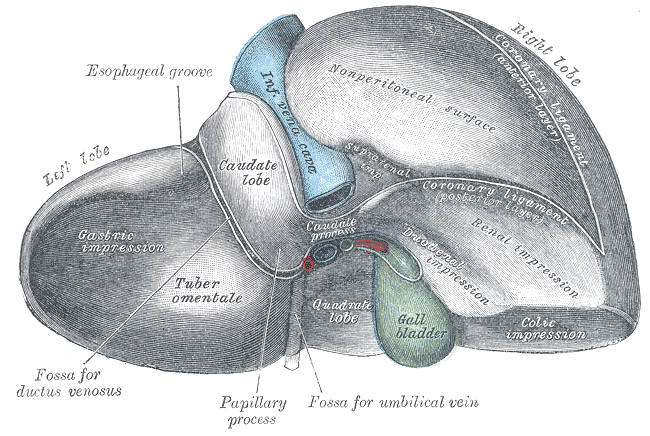
A liver disease may be caused either due to genetic or metabolic defects. The defects may arise due to an enzyme or transport protein that alters the system and causes problems to the liver. This article is going to discuss some of the genetic diseases of the liver and the role of genes in causing early liver diseases.
Genetic Haemochromatosis
Haemochromatosis is a recessive disease where excess iron is absorbed in the body and the deposits are collected in organs. This disease is seen in people having iron overload disorders. Analysis of Human haemochromatosis protein (HFE) would confirm Haemochromatosis.
Alpha-1 Antitrypsin Deficiency
An important liver protein called alpha-1 antitrypsin does not get produced or gets produced in very lower levels in the blood. Though people with this disease have this protein, it gets accumulated in the liver instead of going into the bloodstream. It has been found that this disease is due to the mutations in the SERPINA1 gene.
Cystic Fibrosis Liver Disease (CFLD)
Cystic fibrosis is caused due to the failure in secretion by the biliary epithelium thereby causing an absent or dysfunctional CFTR protein. CFTR protein’s main role is to participate in the first stage of ductal secretion. Its absence initiates progressive periportal fibrosis. There is also a theory that existence of modifier genes and three more genes, alpha-1-antitrypsin, transforming growth factor, and mannose binding lectins are also involved in CFLD.
Wilson Disease
Wilson disease is also an inherited genetic disorder where copper gets accumulated in the lungs and other vital organs. Copper is required for the nerves, bones and skin melanin. It is absorbed from the food and excess copper is excreted through bile (secreted by liver). In case of Wilson’s disease, copper is not excreted properly. So it gets accumulated in liver and other vital organs. When diagnosed in early stage, this disease can be treated. This disease is caused by the genetic mutation of ATP7B gene. When the activity of this gene is reduced, it leads to copper accumulation.
Type 1 Tyrosenmia
Tyrosenemia is a genetically inborn disorder where there is an error in the metabolism, where the body is incapable of breaking down the amino acid called tyrosine. It leads to sever liver disease in childhood. This disease is due to the altered activity of fumarylacetoacetate hydrolase.
Glycogen Storage Disease
This is a genetic disease. It can also be an acquired disease. Glucose is the large energy source of the body. Glucose is stored as glycogen in the liver. It is released into the body with the help of enzymes. In case of genetic disorder, there is a defect in the processing of glycogen synthesis or breakdown within muscles, liver and other cell types. Thus, glycogen gets accumulated in the liver causing failure of liver.
Argininosuccinate Lyase Deficiency and Citrin Deficiency
Urea cycle is one in which a series of reactions inside the body converts nitrogen into ammonia and aspartate into urea. These 2 diseases are caused because of errors in the Urea cycle.
There are several other diseases like Alstrom syndrome (rare disorder that affects many organs of the body. This is caused due to the defects in the function or structure of a hair like structure called cilia that is found in all types of cells in the body), Cholesteryl Ester storage disease, Hereditary Fructose intolerance.
The genetic liver diseases are found in a number of cases with different outcome, penetrance and age group. The role of genes in such cases has to be studied further with the help and collaboration of clinical symptoms and laboratory analysis.
Liked this article on Role Of Genes In Liver Disease and have something to say? Comment below and don’t forget to SHARE THIS ARTICLE!
DRUG INDUCED LIVER INJURY

Have you ever taken a closer look at the pain killers or the drugs that have been prescribed to you by your doctor, to either cure some illness or to relieve you of your pain or to keep some abnormalities under control?
Although not all of these drugs come with a warning sign, some of them do display a message on the bottle, especially in pediatric medicines, that over dosage or too much usage may damage kidneys or liver. I bet you would have heard some doctors say that forgetfulness or excessive urination or something unique accompanies the daily recommended dosage of drugs that help you keep diabetes under control. Every drug you take has some side effects. Let us read a few important concepts regarding liver injury through prescribed drugs.
How does this happen?
Liver injury due to drugs can be classified under three categories based on dosage (idiosyncratic toxicity), inherited genes and allergic reactions. If a person continues to take a drug beyond recommended levels, for example too much paracetamol, if a person has inherited certain genes which makes their body intolerant to specific drugs such as penicillin or if a person gets allergic to some prescribed drug due to the movement in the immune system induced by the same, then liver injury falls under those respective categories mentioned above.
Some well known drugs known to cause liver injury
Paracetamols And Pain Killers – Most paracetamols and some pain killers can cause damage to liver and kidneys when taken over a long period of time. Widely known examples are brufen, crocin, nimulid/nimuslide and so on. These can be taken in moderation and only during a pressing need. In other words if you take them every time you suspect a fever or headache then possibility of liver damage could be high.
Statins – Are you suffering from high cholesterol and tri-glycerides? In that case your doctor must have prescribed statin to keep your cholesterol levels low. Most doctors believe statin to be quite safe to the liver. However, studies have proved that prolonged usage of statin may lead to liver damage.
The good news however is once you stop taking statin there is a high chance that liver damages can be reversed. Hence it is better to take statin for such time that you bring cholesterol under control which includes changes in your diet and then discuss with your doctor and refrain from taking it.
Antibiotics – Certain antibiotics taken to help in minimizing some illnesses such as Nitrofurantoin which is used to treat urinary tract infections, Augmentin for treatment of influenza or other viral fever are known to cause hepatitis in some cases over prolonged usage. Hence it is better to ensure that these drugs are taken only under the guidance of a doctor and completion of the drug course is mandatory.
Vitamins – In rare cases doctor may prescribe synthetically created vitamins for betterment of the body. When these vitamins are taken for longer periods of time, they may lead to toxicity. The blood may be filled with these artificially created vitamins and the liver enzymes may be polluted and in turn injure the liver. Well known examples are Vitamin A and D tablets produced artificially.
Liked this article on Drug Induced Liver Injury and have something to say? Comment below and don’t forget to SHARE THIS ARTICLE!
5 THINGS THAT MAY DAMAGE YOUR LIVER
You probably are not aware of the huge number of functions your liver does to maintain your overall health. In fact liver is the most important organ in your body and plays a definitive role from digestion to accumulation, generation of blood to secretion of hormones and even in your general immune system.
Almost 500 functions are performed by this football sized organ and hence should be treated rightly to keep you staying healthy throughout your life.
There are some things that you need to keep your liver healthy such as following the right kind of food habits, a good fitness regime, drinking lots and lots of water and having a good night’s sleep.
Well, there are some other things which you should not do, because these deeds of yours would damage your liver. Some such activities which you must avoid are discussed here.
- Fatty Food
10% of the overall fat that is present in your body goes directly to your liver and gets accumulated there. So for every 100 gm increase in fat your liver gets 10gm fat. The total weight of your liver is 1.36 kg; even an increase in 10 grams would mean a 10% increase t its normal weight.
Now imagine if the accumulated fat was the bad cholesterol or the saturated fat, the amount of harm it would cause to your liver and therefore your body would increase many fold almost instantly.
Thus fatty food consumption has to be minimized, concentrate on avoiding processed and preserved food such as pizzas and burgers.
- Processed Food
The main function of liver is cleansing your system; this implies that all the toxins, impurities and the non digestible waste would go to the liver for further filtration.
Preservatives, as the name suggest preserve food substances from the attack of microorganisms. Thsese microorganisms though cause harm to our body, still are living things. So basically the preservatives act against the functions of a loving thing to inhibit it from growing on a food substance. It is thus, a proven toxic product acting against the growth of a living being.
When these toxins reach the liver they cause irreparable harm to the liver and sometimes lead to serious liver conditions.
- Alcohol
Too much of alcohol consumption is considered to affect the functioning of liver directly. This is because when liver processes fats it converts them to sugars and sends it to through the blood to be used as energy. Alcohol hinders this conversion of fat to sugar.
Thus, fat remains as fat in liver rather than being converted to sugar. This leads liver conditions such as fatty liver, alcoholic hepatitis and even cirrhosis.
- Drug Overuse
Medications, especially over the counter medications have to be taken only under unavoidable circumstances. The drugs such as painkillers and even vitamin additives do not get metabolized completely in the digestive system.
Some chemicals in them remain circulating further and reach the liver. Here they hinder the normal functions of liver and cause damage to it.
- Artificial Sweeteners
Using glucose is good for your health because it gives energy to perform your normal activities. However artificial sweeteners which are cheaper than sugar and give instant sweetness to juices and food do not give glucose.
They are made of sucrose or fructose. These sweeteners cannot be easily metabolized and hence leave behind toxic impurities that are carried away to the liver. In the liver they affect the bile production and also other hormonal production processes harming liver and its functions.
Some of the above activities seem to be a normal thing you do in your day to day life, and may not have looked so harmful too. However in the long run you would end up with liver conditions if they are not checked.
Liked this article on 5 Things That May Damage Your Liver and have something to say? Comment below and don’t forget to SHARE THIS ARTICLE!
